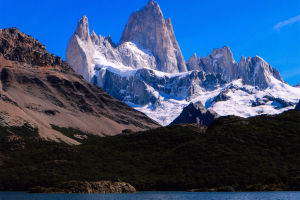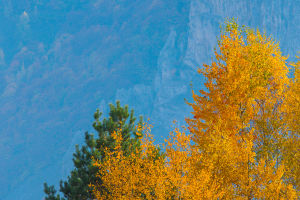Located on the sea coast in the province of La Spezia, in the Italian region of Liguria, the Five Fishing Villages are perched on a cliff overlooking the turquoise sea.
This World Heritage Site dates back to the early Middle Ages, and most of its historical remains have been well-preserved.
The forts with medieval architecture, watchtowers, field gardens in the mountains, steep cliff stairs, colorful houses, and the turquoise-blue Mediterranean Sea form a unique and picturesque scenery.
While there is no shortage of rugged coastlines or beautiful coastal villages along the Italian coast, the Five Fishing Villages are among the most representative ones. Monterosso, Vernazza, Corniglia, Manarola, and Riomaggiore are five small fishing villages that, under the bright sunlight of the Mediterranean Sea, interweave a simple and lovely watercolor painting, as if walking into a gorgeous fairy tale wonderland.
1. Monterosso al Mare
Monterosso is the most accessible of the five fishing villages and has suffered from pirate attacks in the past. To defend themselves, the people built a defense system that has been preserved to this day. The remains of the castle, walls, and watchtowers can still be seen today. While the pirates no longer exist, the fortifications have become an ornamental attraction. Along with a pleasant and relaxing beach, famous lemon trees, and anchovies, Monterosso entertains a steady stream of visitors from around the world.
2. Vernazza
Vernazza is the only one of the five fishing villages that have a natural harbor and is, therefore, the most economically prosperous village. At the end of the harbor pier, there is a natural swimming place. In the summer, it is most comfortable to jump into the clear blue water in one leap or take a few simple steps and slide into the cool water. Looking up from the harbor, you can easily see Doria Castle at the top of the hill. This is the oldest surviving fortified building in the village and is now the best place to climb to the top of Vernazza for a panoramic view of the harbor. It welcomes hundreds of tourists and hosts cultural events, art exhibitions, and shows.
3. Corniglia
The whole village is surrounded by vineyards, and in autumn, you can smell the sweet scent of grapes. Climbing up the stairs pays off, and when you reach the top, the magnificent view can brighten up your eyes in an instant. The blue sea and winding coastline from the top of the hill overlooking the entire Five Fishing Villages make you feel enlightened and relaxed.
4. Manarola
Manarola is probably the oldest of the five fishing villages, dating back to the end of the 12th century. You can walk through ancient medieval ruins, among vineyards and terraces, and admire the houses of various colors along the cliffs. Every year, from the beginning of December to the end of January, 300 lighted figures symbolizing the birth of Jesus are placed scattered among the terraces. When night comes, these figures are lit up, and the hillside is dotted with lights, like the night sky dotted with stars, in the grandest nativity scene in the world.
However, summer is the most popular season here. Lush vineyards, winding cobblestone streets, colorful houses, and clear blue seas all shine in the summer sun. The panoramic photo of Manarola brings together all these beautiful scenes and becomes a representative of the "Five Fishing Villages" searched on the Internet. Many people visit the village because of the photos of Manarola.
5. Riomaggiore
Riomaggiore is the southernmost and the largest of the five fishing villages.
This village and town is the unofficial capital of the Five Fishing Villages and the most typical of them. The colorful buildings with mottled siding on the cliffs stretch down the steep gorge to the tiny harbor, which glows romantically at sunset.
If you want to learn about the origins and history of the Five Fishing Villages, you can visit the Memory Museum here.
Although the museum is small, it provides comprehensive information about the village, and you can learn about its traditional culture, community development, natural resources, agriculture, and fishing, like an encyclopedia about the village.


